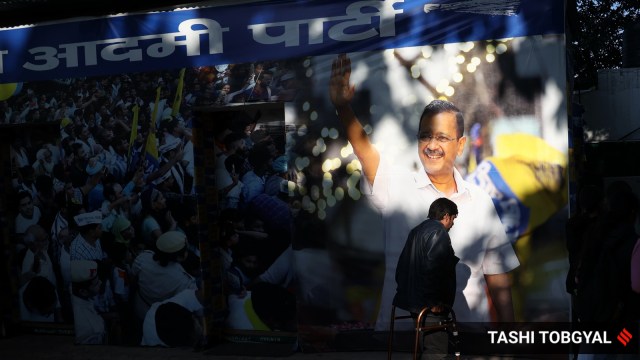

Feb 8, 2025 19:58 IST First published on: Feb 8, 2025 at 19:58 IST
Post Indira Gandhi and Rajiv Gandhi, India witnessed coalition politics for nearly three decades with no party getting a clear majority. “Mili-juli sarkar” was the mood of the nation. The lowest point came with the frequent scams and scandals, sluggish growth and a global recession during UPA II (2009-2014). In this context, came a movement led by Anna Hazare, along with trusted lieutenants like Arvind Kejriwal, which swept the nation, and mobilised the middle class and students. Kejriwal’s Aam Aadmi Party (AAP) rose from the ashes of the India Against Corruption (IAC) movement. The influence of IAC and Kejriwal’s politics of revdi (freebies) on the Indian polity has been significant, if not monumental.
Come 2025, we are witnessing the defeat of the AAP on the very same issues that had seen its rise. The narrative of aam aadmi ki sarkar (people’s government) on which AAP rose to power in 2013, 2015 and 2020, gave way to the questionable politics of paranoia and a trust deficit between people and the state, of blaming everything on roadblocks put up by the Centre. Voters who have given clear mandates since the turn of the last decade were fatigued by the unending confrontational politics and opted for a more conciliatory politics. The results have sent a clear message — in this election, more than anything, the vote was against Kejriwal and his politics, effectively asking not just for a change in the government, but also in how the government is run.
Story continues below this ad
We have seen in the run-up to recent elections, not just in Delhi, but in other states and also at the national level, that politics is shifting from appeasement to aspiration. With the results of the Delhi Assembly elections, we are seeing a crystallisation of these aspirations in the minds of voters. The public doesn’t just want basic amenities — it wants incremental improvement in the standard of living. Voters don’t just want free bijli and pani, but also clean water, good roads and governance. The crusade begun by Kejriwal across India in 2013, exhorting voters to ask questions and cast their ballot based on the performance of the government, has come back to haunt him and the AAP.
Delhi has come full circle when it comes to the revdi politics that began with the AAP and spread across India. In the last decade, Delhi saw essential amenities being provided for free, even as quality of life dropped, and infrastructure and roads got worse. The air and water became more and more toxic. Delhi, which had earlier demonstrated that elections can be won by wooing the lower-middle class with freebies, proved this time that expectations about the quality of life and infrastructure with access to clean water and air cut across class divides. The overall analysis of the results in Delhi shows that the BJP-led NDA has bounced back from its setback in last year’s general election and has been able to win back some of its Dalit voters. This is evident not just in this election, but also in the ones held in Maharashtra and Haryana. In previous elections, the AAP had built a stronghold in reserved seats and Dalit majority seats — this time the BJP has got a decisive mandate from Delhi’s Dalit electorate. The BJP has been able to bridge the class gap by using political tools of aspiration, instead of appeasement of class and community with targeted policies and freebies. The old bastions of the AAP, like West Delhi and outer Delhi seats, have been more or less wooed away from it. The consolidation of Dalit voters, with a neo-voting bloc of women once again played a crucial role in bringing the BJP back in the state, continuing the policies and politics of “guarantee”.
The writer is assistant professor of Sociology, Lakshmibai College, Delhi University


